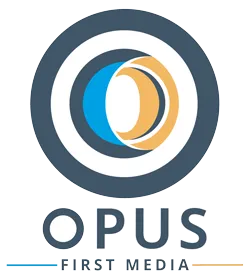
By taking a proactive approach to anti-money laundering (AML) compliance, estate agency businesses can reduce the risk of falling foul of their regulatory obligations.
One of the best ways to do this is by conducting an AML maturity self-assessment.
Estate agencies need to comply with AML regulations. Property professionals may leave themselves open to criminal prosecution, regulatory fines, professional negligence claims and reputational damage if they do not conduct AML checks to the required standard.
Yet, often, firms may be unaware of their risk exposure or do not have the practices, procedures or controls in place to ensure they comply with the money laundering regulations.
SELF-ASSESSMENT
By undertaking an AML maturity self-assessment, firms can identify areas of strength and weakness in their AML programme, allowing for targeted improvements where needed. So, what should firms evaluate?
A firm-wide risk assessment (FWRA) should be in place and updated on an annual basis.
It should encompass all risks the firm faces including clients, geographical area, products and services, delivery channels and transactions.
The assessment should also reflect the latest National Risk Assessment (NRA), which sets out the key money laundering and terrorist financing risks for the UK.
It should also consider the Sectoral Risk Assessment, which supports recognising and reducing the risk of money laundering if you are an estate agency or letting agency business. It’s essential that the FWRA documents when it was approved and by whom in senior management.
The second part of risk assessment is where each client has a tailored and well-documented risk assessment.
This supports the correct level of client due diligence being conducted from ingestion and throughout the relationship.
ANTI-MONEY LAUNDERING POLICY
Firms should ensure that their AML policies and procedures are up to date. These policies should clearly outline employees’ responsibilities and address areas like reliance under R39 regulations, which allow dependence on third parties to conduct due diligence on clients, as well as the application of simplified due diligence (SDD), the lowest level of customer due diligence when the risk of money laundering is low.
CUSTOMER DUE DILIGENCE (CDD)
An effective CDD relies on gathering and verifying accurate customer information, confirming the source of funds, and maintaining detailed records of all verification steps.
Regularly reviewing and updating CDD procedures helps maintain compliance with evolving regulations and preserve operational integrity.
A firm’s processes should be practical and help employees understand compliance requirements, customer identity verification, ongoing monitoring, and red flag identification.
COMPLIANCE REPORTING

It’s essential to appoint a Money Laundering Compliance Officer (MLCO) and a Money Laundering Reporting Officer (MLRO) where regulation 21 applies, along with designated backups, and to introduce these roles to the team.
Firms should also register with the National Crime Agency to submit Suspicious Activity Reports (SARs).
Compliance monitoring should be ongoing, including regular file reviews. A documented process should be in place to address any non-compliance, rectify issues, and capture lessons learned.
REGULATION CONTROLS
Regular independent reviews are a best practice that can highlight additional recommended actions. Overall, the firm should be able to explain its AML procedures and decisions if it is audited.
Therefore, all documentation should be organised, with copies retained as required by the Money Laundering Regulations (MLR). Equally important, the firm should be aware of its data deletion process.
Firms should identify and regularly screen relevant employees to ensure compliance standards are followed.
TECHNOLOGY

Technology tools can assist in identifying and verifying individuals and corporate entities to integrate with existing systems, methods, and databases, alongside identifying potential red flags.
Clearly defining and understanding the role of technology in AML compliance enables an estate agency to ensure they are using technology correctly to augment their existing policies and procedures.
All staff should understand how tools are used and what the results mean. This should be documented, particularly when identifying where it is appropriate to intervene during the process.
By self-assessing their strengths and weaknesses in these areas, estate agencies can evaluate their overall AML maturity. By better understanding the areas that need to be improved, firms can enhance their compliance and reduce exposure to regulatory penalties.
Harriet Holmes is AML Services Manager at Thirdfort










